SMART Indicator Report: Ecosytem overfishing
3 Indicator brief description
Ecosystem overfishing is an ecological, and not legal, term that ultimately evaluates how much fish are caught in an ecosystem relative to how much can be produced. Several indices are used to evaluate ecosystem overfishing, the Ryther index, the Fogarty index, and primary production required.
4 Indicator visualization
Compared to thresholds based on global estimates of primary production and catch, the Ryther index shows elevated levels of fishing in the Gulf of Maine and the Mid Atlantic but not at a point considered “extreme” [116]. When accounting for regional primary productivity the Fogarty index shows low levels of fishing relative to these global thresholds. Thresholds based on regional estimates of primary productivity, are not yet available. This work is ongoing
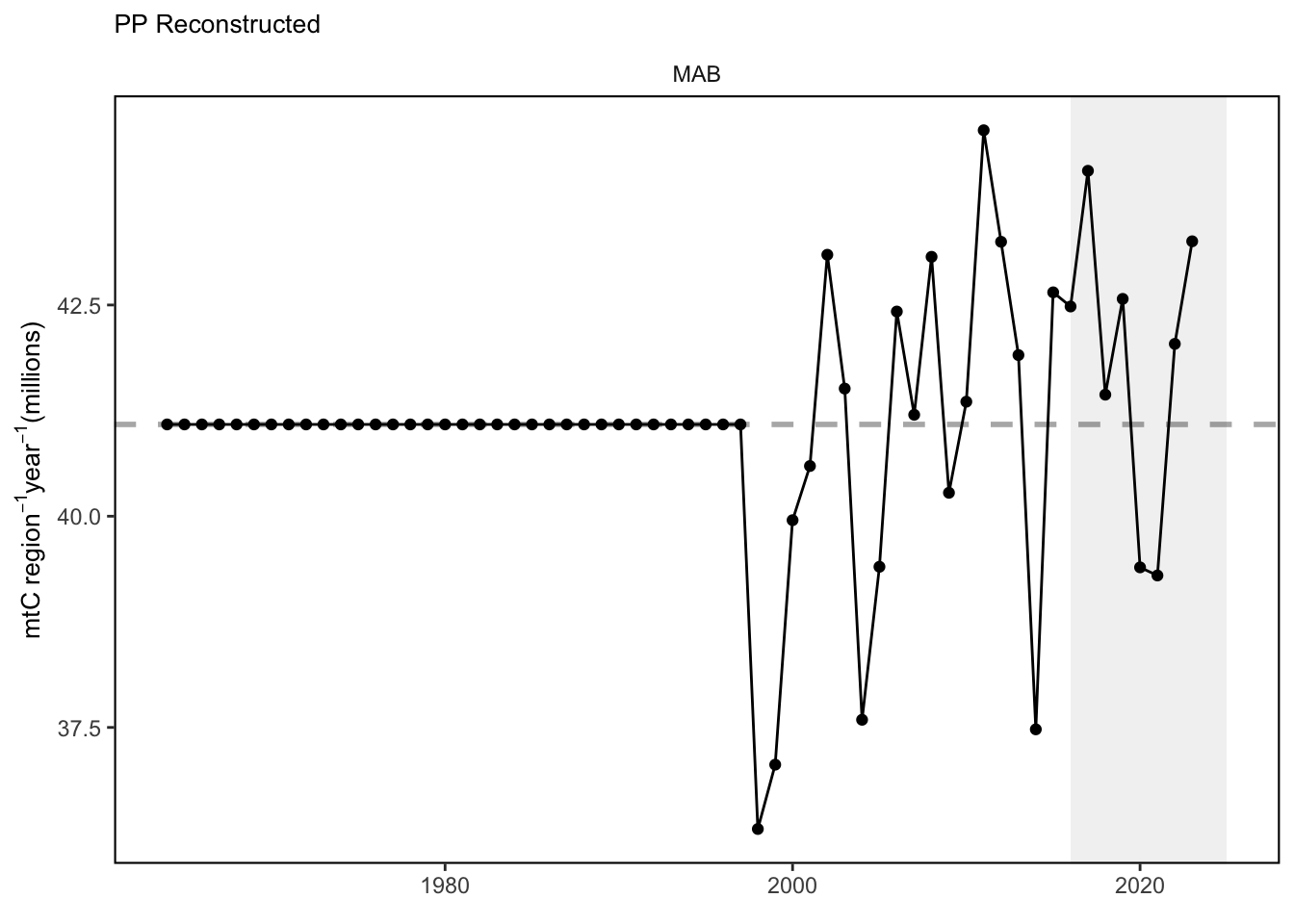
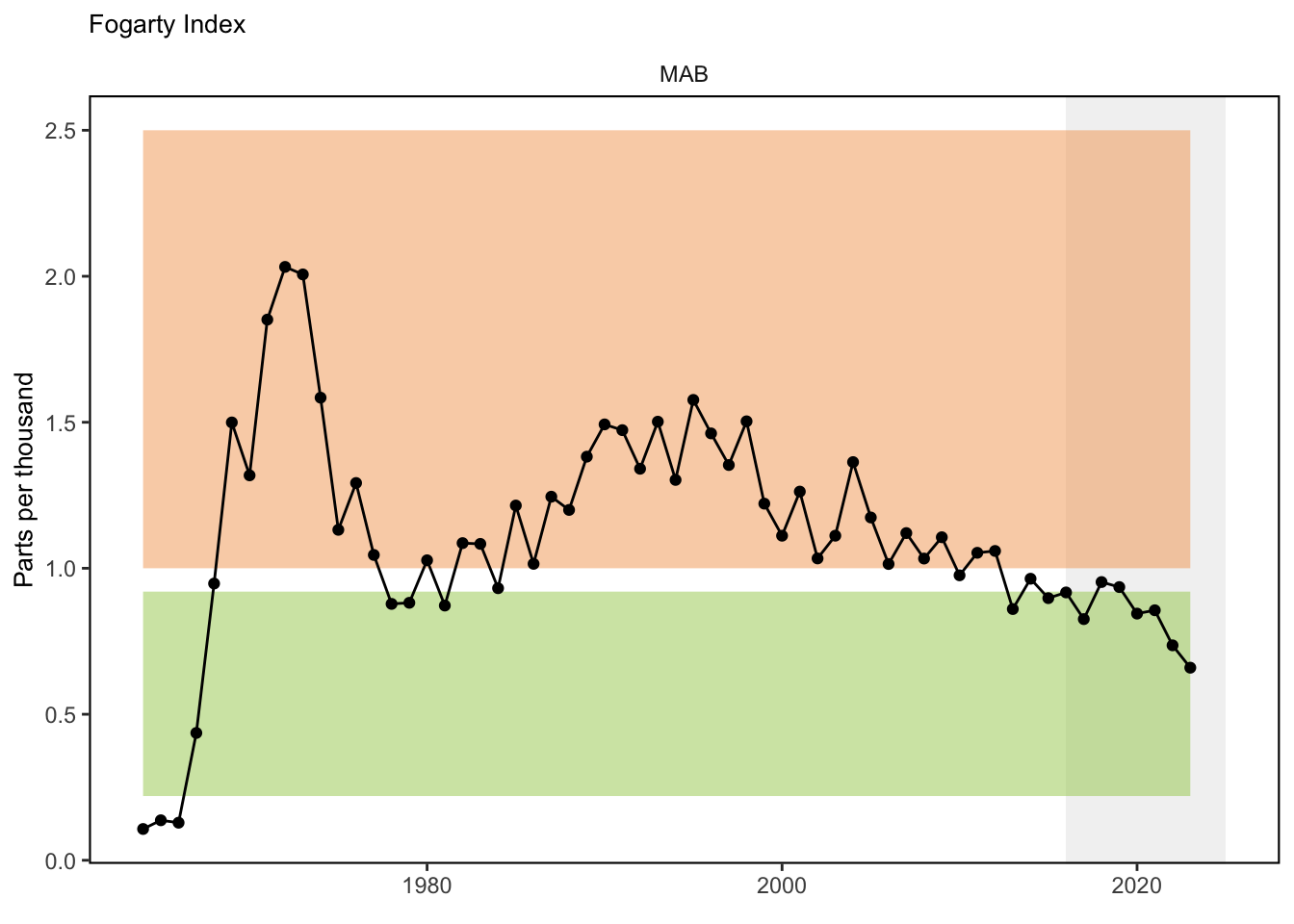
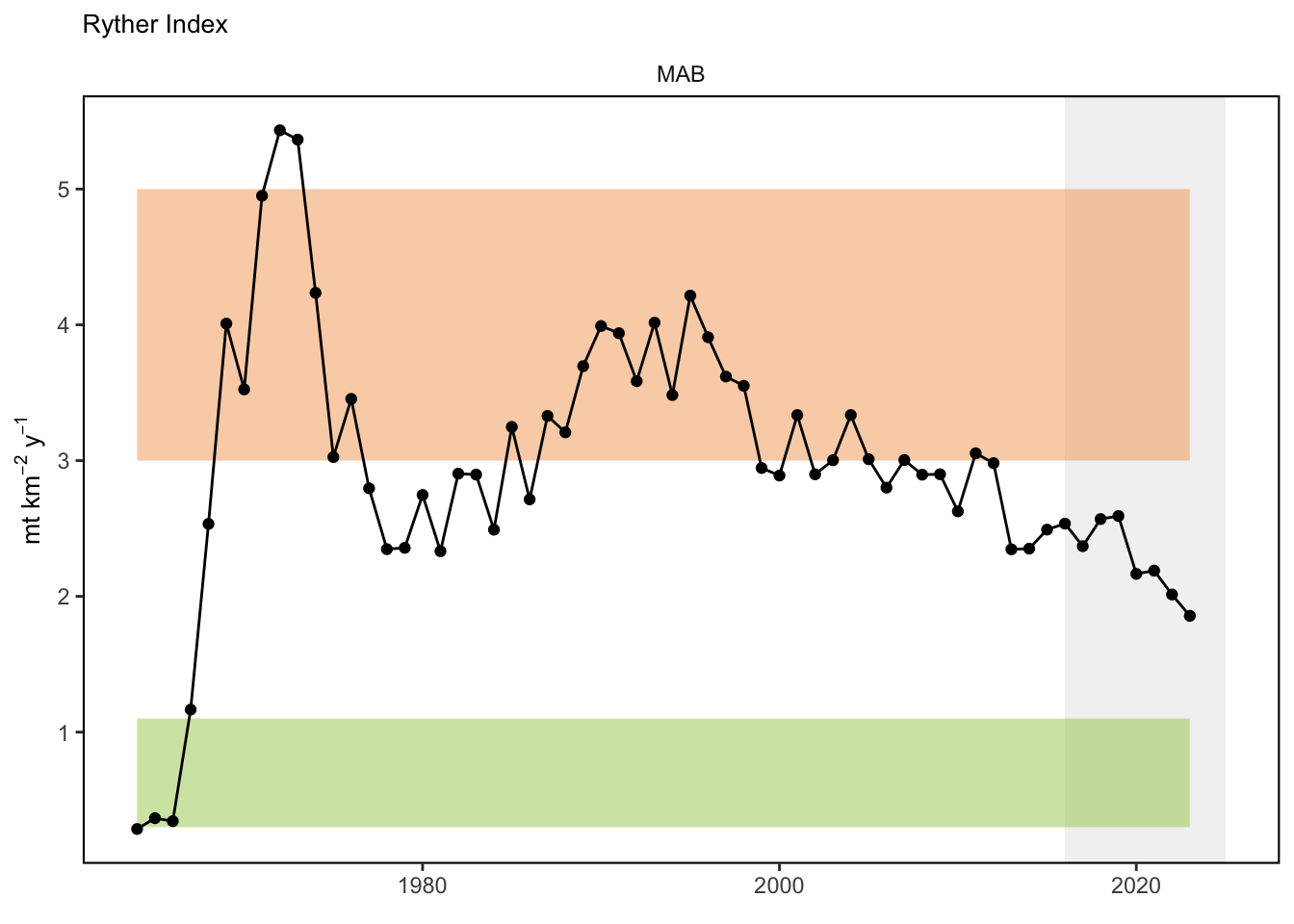
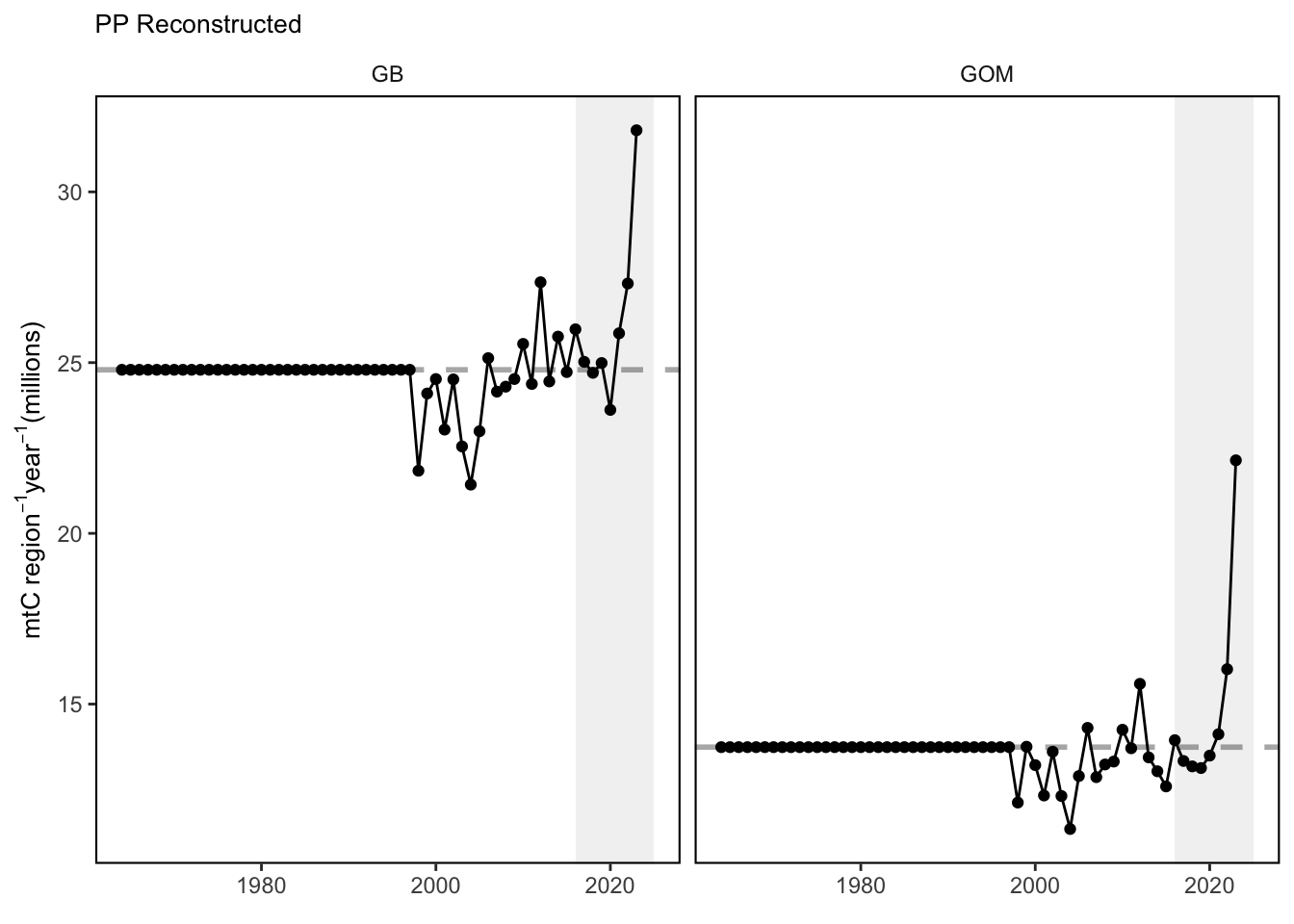
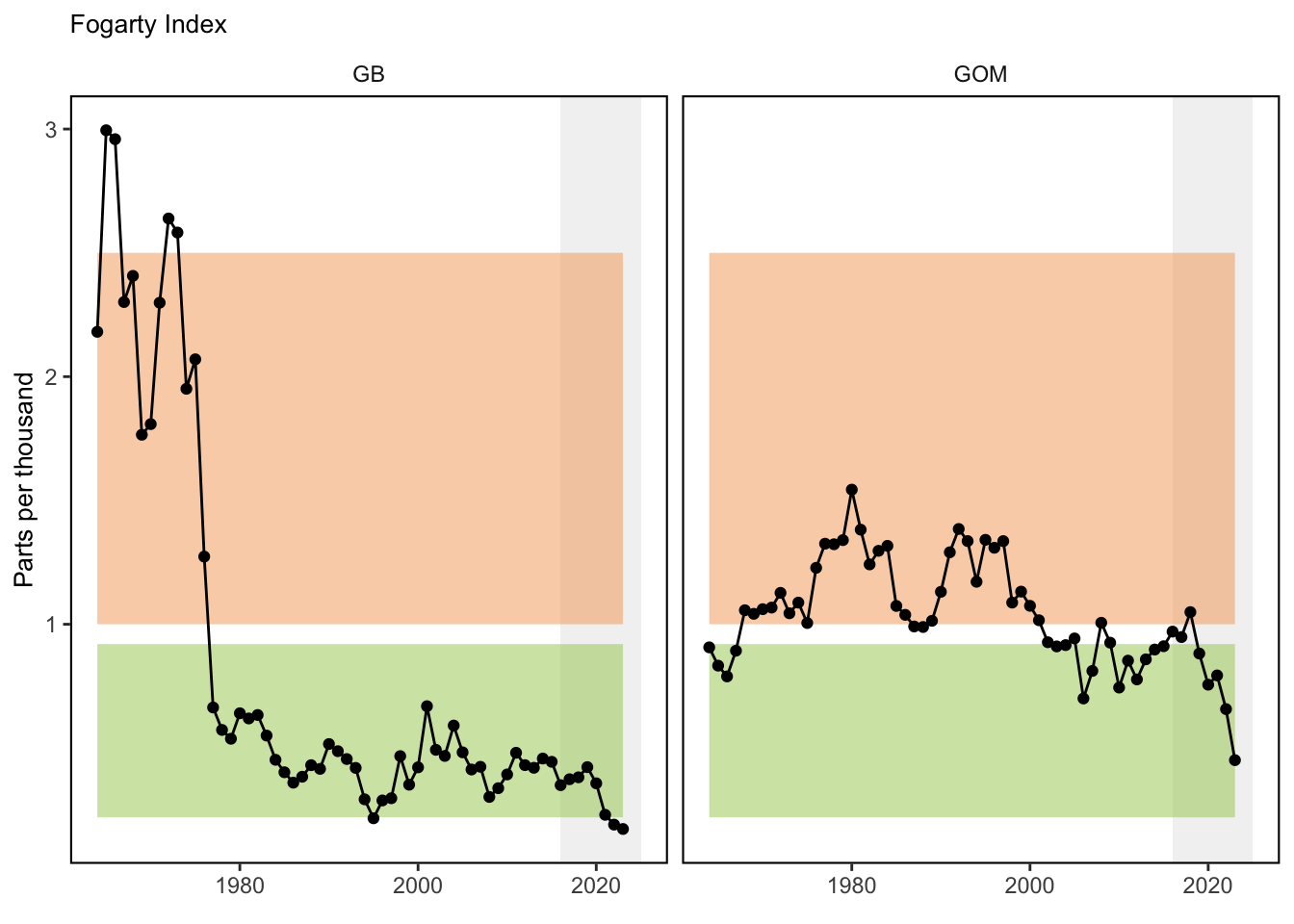
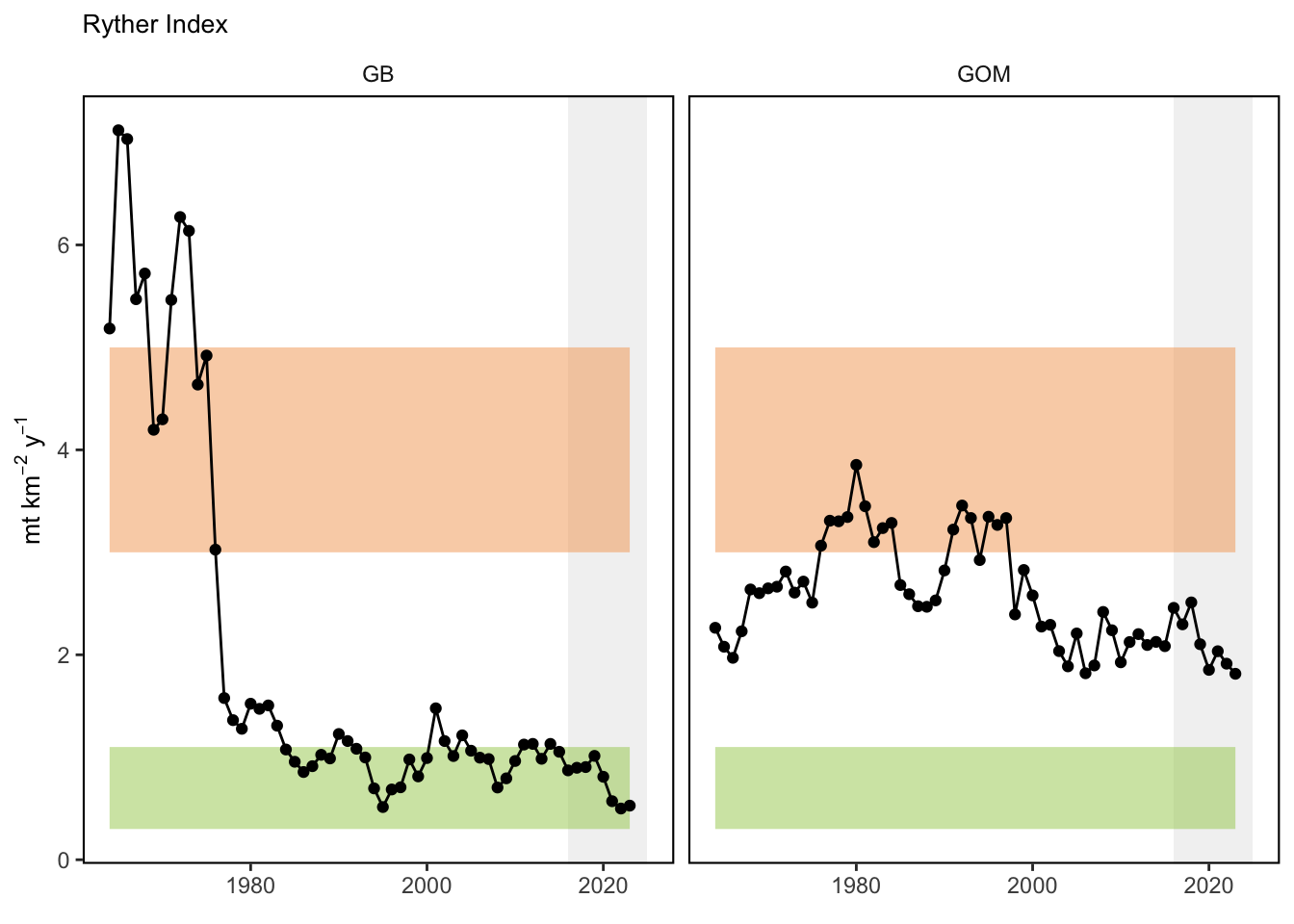
5 Indicator documentation
5.1 Are indicators available for others to use (data downloadable)?
## Yes5.1.1 Where can indicators be found?
## Data: https://noaa-edab.github.io/ecodata/index.html
## Description: https://noaa-edab.github.io/catalog/ppr.html
## Technical documentation: https://noaa-edab.github.io/tech-doc/ppr.html5.1.2 How often are they updated? Are future updates likely?
[need sequential look at datasets for update frequency. Future requires judgement]
5.2 Gather indicator statistics
5.2.2 Length of time series, start and end date, periodicity
General overview: Annual
Indicator specifics:
Indicator | EPU | StartYear | EndYear | NumYears | MissingYears |
|---|---|---|---|---|---|
Fogarty | GB | 1964 | 2023 | 60 | 0 |
Fogarty | GOM | 1964 | 2023 | 60 | 0 |
Fogarty | MAB | 1964 | 2023 | 60 | 0 |
PP | GB | 1964 | 2023 | 60 | 0 |
PP | GOM | 1964 | 2023 | 60 | 0 |
PP | MAB | 1964 | 2023 | 60 | 0 |
Ryther | GB | 1964 | 2023 | 60 | 0 |
Ryther | GOM | 1964 | 2023 | 60 | 0 |
Ryther | MAB | 1964 | 2023 | 60 | 0 |
5.2.3 Spatial location, scale and extent
General overview: EPU
Indicator specifics:
Indicator | EPU |
|---|---|
Fogarty | GB |
Fogarty | GOM |
Fogarty | MAB |
PP | GB |
PP | GOM |
PP | MAB |
Ryther | GB |
Ryther | GOM |
Ryther | MAB |
5.3 Are methods clearly documented to obtain source data and calculate indicators?
## Yes5.3.1 Can the indicator be calculated from current documentation?
[Build link to Tech-doc, look for current and previous methods]
5.4 Are indicator underlying source data linked or easy to find?
[Build link to Tech-doc, look for source, may require judgements]
5.4.1 Where are source data stored?
[Build link to Tech-doc, look for source, may require judgement]
6 Indicator analysis/testing or history of use
6.1 What decision or advice processes are the indicators currently used in?
The Ryther index is defined as total catch per unit area in the ecosystem [116]. The units are mt km^-2 year^-1. It measures the total removal of fish biomass by area in a Large Marine Ecosystem relative to how much that entire ecosystem can produce. In general terms, the lower the Ryther index, the less likely an ecosystem will be experiencing ecosystem overfishing. The Fogarty index is defined as ratio of total catches to total primary productivity in an ecosystem [116]. The units are parts per thousand. A modification of the indices are used. Total landings are used in lieu of total catch. Accountng for total IUU (Illegal, unreported, and unregulated fishing) data, at the spatial footprint required, is not currently available. This will have the effect of reducing the value of the index (compared to using total catch, including IUU).
6.2 What implications of the indicators are currently listed?
There is insufficient evidence to determine whether ecosystem overfishing in occuring in our region. However the overall amount of ecosytem fishing has been declining over the past several years.
6.3 Do target, limit, or threshold values already exist for the indicator?
[Fill by hand; if not in key results or implications, likely does not exist]
6.4 Have the indicators been tested to ensure they respond proportionally to a change in the underlying process?
[Fill by hand; if not in introduction, key results, or implications, likely not tested]
7 Comments
[Fill below by hand once above data complete]
7.1 Additional potential links to management in addition to uses listed above
7.2 What additional work would be needed for the Council to use the indicator?
7.3 What issues are caused if there is a gap or delay in data underlying the indicator